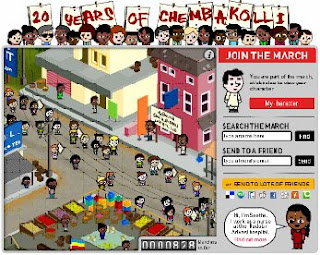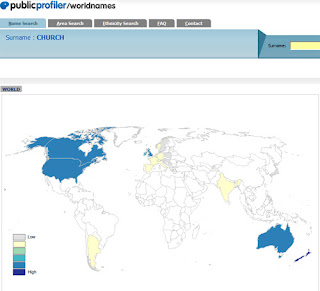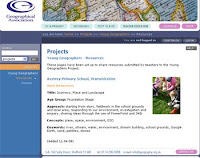
See the full PicLit at PicLits.com
Created to share good ideas about primary geography with teachers and other educational professionals.



For
26 September 2008: Chembakolli, a village in southern
To celebrate this anniversary, ActionAid is launching an online march, enabling teachers and pupils to create their own character and personalised placard before joining the virtual march.
Starting in Gudalur, the virtual route follows the footsteps of the real march, twenty years ago. In the town, the marchers can click on local landmarks, including market stalls, the hospital and school, and meet real life people and read their stories. As more people join the march, the route will extend into Chembakolli where visitors can learn about life in the village by clicking on parts of the village, local people, and an elephant.
As part of the celebrations, ActionAid has also produced The Chembakolli story, a beautifully narrated audio CD accompanied by a story/activity book and poster. The CD covers the events of the past 20 years in six parts, each with descriptive sound and music clips recorded in the village. It is ideal for classroom listening and interpretive learning and is available for £20 (inc p&p).
To take part go to the Adivasi Lands Right March website |
| Opening of Castleford Bridge - 4th July 2008 |


We’ve had a really good August at home this year walking local footpaths and finding places that we’ve never been to before, all within a 5 mile radius of home. The motivator for all of this activity has been the Geograph website.
If you are not familiar with the site, then the aim of Geograph is to collect photographs for every square kilometre within the UK. 88% of England, Scotland & Wales now have at least one photo per kilometre square and 22% of Ireland has been covered.
This is a really useful website if you need images of the UK, first because all images are shared under the Creative Commons License (this means that although the photographer owns the copyright they have agreed to other people using their images). Second because the images are a reasonable size (640 pixels wide) they are very useful for projecting on an interactive whiteboard. So forget those tiddly little snippets that you find through searching Google Images – most of which are covered by copyright – and nearly all of which are useless for projecting and start exploring Geograph.
So log-on to their website: www.geograph.org.uk
Choose a place – it’s not very good at recognising postcodes – so either the place name or a four figure Grid reference work best.
If you want to see where I’ve been walking, then you could start in the west on the Moorland above Langsett ( SE1800 in the search box or http://www.geograph.org.uk/gridref/SE1800 should take you directly there) and try working your way east towards the M1 motorway.

`The MapPilot enables a range of Ordnance Survey digital mapping to be accessed free by pilot schools and educational mapping suppliers for a trial period. MapPilot is run by Becta, in conjunction with The Advisory Unit: Computers in Education and eMapSite with funding from DfES and support from Ordnance Survey.'
I'm currently registered with the map pilot in conjunction with Methodist J & I and I've finally got around to downloading some maps from the site and using them in conjunction with the software programme `Local Studies'.
The map I chose to use was the `Streetview' map of Wakefield, which was unknown to me before I became involved in the project. It is simple and clear and allows some additional information to be added to the map (via a simple GIS such as Local Studies) without appearing too cluttered and illegible. The current round of voting has now closed. Nineteen people have registered their vote so far – which is pleasing because I recognise that this is a relatively unknown blog.
The current round of voting has now closed. Nineteen people have registered their vote so far – which is pleasing because I recognise that this is a relatively unknown blog. As might be anticipated Google Maps and Google Earth have achieved the highest scores (though only just) and Multi-Map is perhaps beginning to lose out. This overall score reflects my own current use of online mapping as I much prefer Google Maps to the re-vamped version of Multi-map.
One programme that is well worth a look is the Microsoft website, variously known as Live Local, Maps Live etc. This has not scored as well as Google maps yet for some parts of the country the satellite views are far more detailed than on Google Maps.
The current edition of Web User Magazine 24 April – 7 May 2008, Issue 186 (which I think is excellent), devotes 2 pages to getting the most from `Live Search Maps’, pp. 62-63
 The first of our our Young Geographers project resources, written by Jane Mulligan of Austrey Primary School, Warwickshire has been added to the Geographical Association website. Click on the page image to be taken to the website.
The first of our our Young Geographers project resources, written by Jane Mulligan of Austrey Primary School, Warwickshire has been added to the Geographical Association website. Click on the page image to be taken to the website.On Friday 25th January I took part in a conference for a pyramid of Wakefield schools. What follows are a few of my thoughts linked to the keynote presentation.
The first thing that strikes me is the influential role of some of the independent educational consultancies in shaping the direction that primary schools take when reviewing their curriculum. In this case our conference was led by a well regarded keynote speaker from a prominent commercial education consultancy.
[I want to return to two of these areas, i.e. the ones that relate to assessment in geography and to Global Warming in a later entry.]
So, do the solutions to the primary curriculum lie with the published advice and guidance that commercial educational organisations provide or do the solutions lie with teachers in the classroom who know their pupils and want to provide a curriculum that starts with the child and takes into account the needs of the child and the community in which the child grows up?
 It was great to meet so many enthusiastic teachers at yesterday's Quality Geography Conference in London.
It was great to meet so many enthusiastic teachers at yesterday's Quality Geography Conference in London.Global Citizenship and Education for Sustainable Development

Currently KS3 are being asked to focus their planning for geography around key concepts. Paula Owens (my job share partner) and I have been thinking about whether a similar approach could be useful in the primary school. We believe that the use of `concepts' as a planning tool might help ensure that geography does not disappear from the curriculum if schools move towards cross-curricular approaches to learning.
· Engaging in practical 'curriculum making'
· Capturing the sense of motivating 'living geography'
· Learning Outside the Classroom
· Education for Sustainable Development
My introductory presentation was designed to promote reflection on what we might mean when we talk about `Living Geography' and what kinds of activities teachers are using to develop this approach in the primary classroom.· The link between place and identity, i.e where we grow up is a key factor in shaping our identity
· The importance of engaging young people with their own place and supporting them to explore their feelings about the place – Quikmaps example,
· Involving young people in `changing places’ – the importance of feeling that you can make a difference to your community, learning how change happens, what’s involved, making change happen (making learning real - not just another `school' activity)
· The importance of geographical imagination to the way we think about `place’ – location, first hand-experience, the way the world is represented to us and our emotional response to places are all important factors in shaping our geographical imaginations. Actual journey’s (fieldwork) and virtual journeys (role-play, drama, imaginative engagement with photographs) are valuable classroom activities that both inform and extend our geographical imagination.
· Discussions with others can help us to re-think the way that the world has been represented to us - `What image comes into your head when you are asked to think about